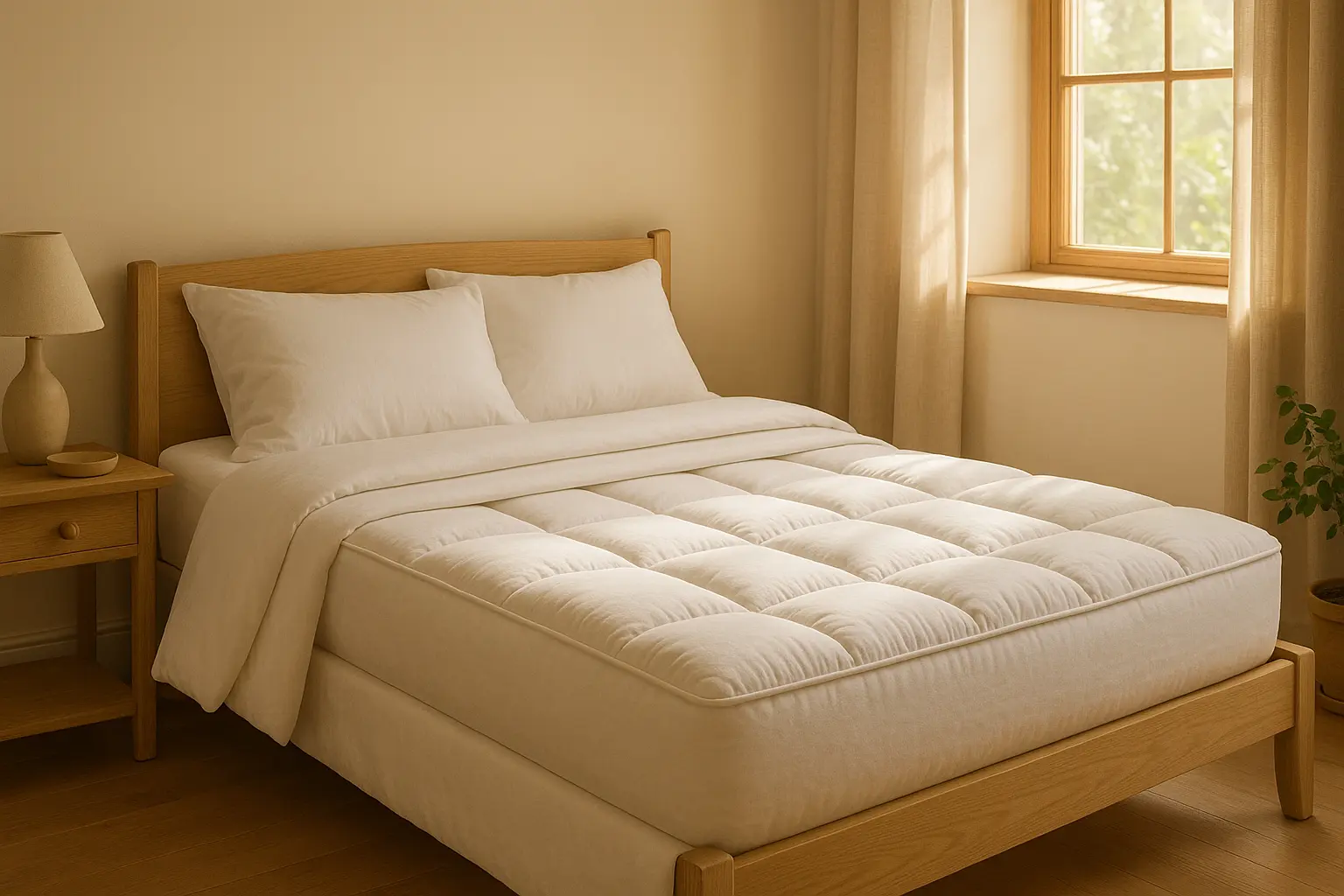Creating the perfect bed is an art form that combines comfort and aesthetics equally. At the heart of this transformation lies the often-overlooked mattress topper, the secret weapon for achieving hotel-quality comfort at home. Whether you’re dressing a queen size bed or a cozy twin, understanding how to layer blankets and throws properly can mean the difference between a mediocre night’s sleep and waking up feeling truly refreshed. This comprehensive guide will walk you through every step of creating your ideal sleep sanctuary, from selecting the perfect foundation to arranging decorative finishing touches that elevate your entire bedroom aesthetic.
The Foundation: Why Your Mattress Topper Matters Most
Before adding a blanket, your sleep experience begins with what’s directly beneath you. A quality mattress topper serves multiple crucial functions that many sleepers overlook:
- Comfort Customization – That too-firm mattress you bought on sale? A 2-3 inch fluffy mattress topper can soften it perfectly. Conversely, a firmer topper is needed if your bed feels quicksand.
- Temperature Regulation – Modern topper materials like gel-infused memory foam or breathable latex can lower sleep surface temperature by up to 5°F compared to traditional options.
- Hygiene & Protection—A waterproof topper creates a barrier against sweat, dust mites, and spills, potentially extending your mattress’s lifespan by several years.
- Pressure Relief—Clinical studies show that proper pressure distribution from a quality topper can reduce nighttime awakenings by 30% for side sleepers.
When selecting your topper, consider the following:
- Material (memory foam, latex, down alternative)
- Thickness (2″-4″ for optimal comfort)
- Breathability (important for hot sleepers)
- Hypoallergenic properties (if allergies are a concern)
The Science of Blanket Layering
Understanding thermal dynamics transforms how you layer blankets. The human body naturally cools down at night as part of our circadian rhythm, and proper layering accommodates this:
Base Layer (Against Skin):
- Opt for natural fibers like cotton or linen
- Wicks moisture away from the body
- Provides initial warmth without overheating
Middle Layer (Insulation):
- Wool or down alternatives work best
- Traps warm air close to the body
- Should be breathable to prevent sweating

Top Layer (Weather Protection):
- Quilts or heavyweight blankets
- Blocks external cold air
- Can be removed easily if too warm
This system creates what sleep scientists call a “microclimate” around your body, maintaining an ideal temperature range of 60-67°F for optimal sleep.
Seasonal Layering Strategies
As seasons change, so should your bedding approach. The same layered setup that keeps you cozy in January might leave you sweating in July. Let’s examine how to adapt your queen size bed layering to match the weather outside your window.
Summer Sleep Solutions
For hot sleepers or warm climates:
- Start with a cooling mattress topper (gel or graphite-infused)
- Use moisture-wicking bamboo or linen sheets
- Layer with a lightweight cotton blanket
- Keep a folded throw at the foot of bed for pre-dawn chills
Winter Warmth Approach
For cold nights:
- Begin with an insulating wool or featherbed mattress topper
- Add flannel or brushed cotton sheets
- Include a down alternative duvet (12-15 tog rating)
- Top with a heavyweight wool or fleece blanket
- Place an extra throw within easy reach
Design Principles for a Beautiful Bed
Beyond comfort, your layered bed should be visually appealing. Follow these designer-approved techniques:
Color Story:
- Choose 3 colors: 1 dominant, 1 secondary, 1 accent
- Layer darkest to lightest from bottom to top
- Use throws to introduce patterns or textures
Texture Play:
Combine at least 3 different textures:
- Smooth (sateen sheets)
- Nubby (cable-knit throw)
- Plush (faux fur blanket)

Proportion Guidelines for Queen Size Bed:
- Topper/sheets should be invisible beneath blankets
- Duvet should drape 12-18″ over sides
- Throws should cover about 1/3 of the bed width
Special Considerations
Not all sleepers have the same needs, and certain situations require tailored solutions. Whether you’re dealing with allergies, sharing a bed with a partner who has different preferences, or managing chronic pain, these specialized approaches can help.
1.For Allergy Sufferers
- Use hypoallergenic mattress topper covers
- Wash all bedding weekly in hot water
- Avoid down fill if severely allergic
- Consider antimicrobial bamboo fabrics
2.For Couples With Different Needs
- Try dual-zone mattress toppers with different firmness
- Use separate twin blankets under a shared duvet
- Place cooling pads on one side only
3.For Chronic Pain Patients
- Memory foam mattress toppers reduce pressure points
- Weighted blankets (12-15% of body weight) may help
- Electric blankets with zone heating target sore areas
Maintenance & Care
Proper care extends the life of your bedding investment:
Mattress Topper Care:
- Rotate every 3 months
- Spot clean only (unless machine washable)
- Replace every 3-5 years
Blanket Storage:
- Fold rather than hang to prevent stretching
- Use breathable cotton storage bags
- Include cedar blocks to deter moths
Washing Schedule:
- Sheets: Weekly
- Blankets: Monthly
- Throws: Seasonal
- Mattress Topper Protector: Wash every 2 months
Troubleshooting Common Layering Problems
Even with perfect layers, you might encounter some nighttime nuisances. Let’s solve sleepers’ most frequent issues with their mattress topper and blanket arrangements. Many people don’t realize that overheating, cold spots, or uneven comfort often stem from simple layering mistakes that are easy to fix once you understand the root causes.
If you wake up too hot or cold, check your mattress topper material first. Memory foam retains heat, while latex and wool regulate temperature better. Then examine your blanket order—the wrong sequence can trap heat improperly. Swap a heavy comforter for lighter layers you can athat djust throughout the night. For cold feet, add a folded throw just at the foot of your queen-size bed instead of covering your whole body.
Conclusion
Mastering the art of layering transforms your queen size bed from merely functional to extraordinarily comfortable and stylish. By starting with the right mattress topper foundation, building intelligent thermal layers, and finishing with aesthetically pleasing throws, you create a sleep environment that caters to both body and soul. Remember that quality sleep is cumulative – each properly selected and arranged layer contributes to better rest night after night.
Ready to revolutionize your sleep experience? Explore premium mattress toppers and luxury bedding collections at Yintex Textile, where comfort meets craftsmanship for your best sleep ever. Sweet dreams await!


Leave a Reply